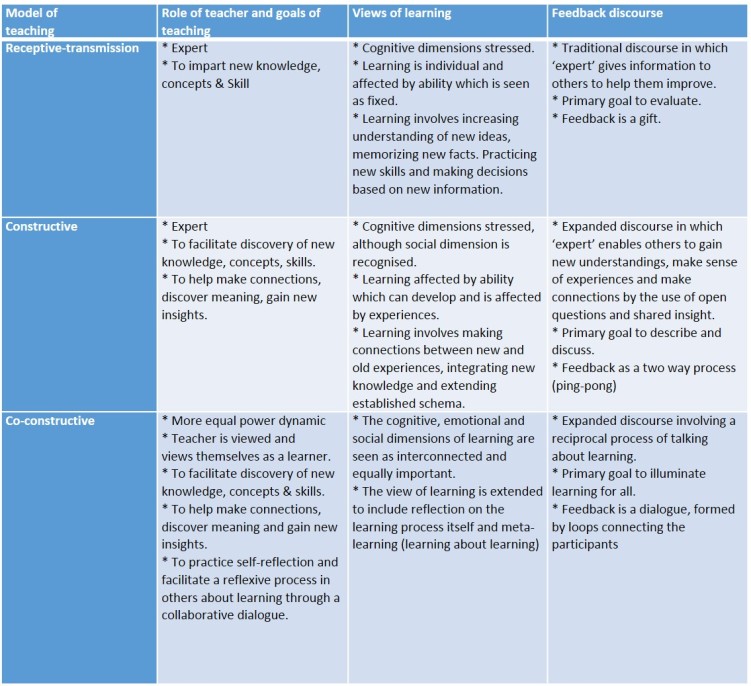Over the course of a number of posts I have laid out a notion of pedagogy as the interpenetration of a number of complex adaptive systems (see here for the foundation of this expanded definition). Conceptually, what sits at the centre of this characterisation of pedagogy is the idea of complexity. Seminar rooms and the activities which develop within them, and the associated activities beyond (study, reading, discussion, etc) are such that we are not able to capture them in their entirety at any point in time – there are always elements which are beyond our perception. This leads to the idea that to research and understand seminar rooms and pedagogy is akin to looking onshore from a boat on a foggy day.

When we observe or reflect on pedagogic activity we are only seeing some of the elements present, and rely on extrapolation, much as we might use elements of the landscape as a basis for extrapolating and imagining the detail of the whole landscape.
So if pedagogy is the interpenetration of teaching, learning, curriculum, assessment centred on the tutor and students, how are we able to make sense of the inherent complexity in these environments?
When individuals first begin to teach, they often find the process of teaching confusing, stressful, and even, on occasion, disorientating. I would argue that this is because they are faced with the complexity of the task, with little in the way of structures for sense making. However, as they begin to understand the tasks of teaching, they begin to see patterns in the activity, how various elements work together; this leads new teachers to build heuristics. Heuristics are strategies which emerge from experience, emerging out of groups of similar experiences and in this way creating sense making in complex environments. Individuals often problem-solve by using their experience of similar past events, or knowledge they have gained from elsewhere but which appear to have problem solving potential in the current situation. This allows a level of ‘patterning’ to pedagogic work, and as a result, networks of complex relationships are ‘chunked’ to simplify and make sense of practice. This is a form of ‘complexity reduction’ (Biesta, 2010) where the system is understood in simpler terms through the use of personal frameworks of understanding. However, heuristics are prone to approximation and error. This can be the result of biases and systematic errors in the frameworks which have been developed. Therefore, tutors will tend to identify elements of practice which appear not to work well, particularly through the use of reflective practice. In this framing reflective practice is a process by which the errors or approximations in heuristics are identified and developed to improve the heuristic models by which we operate.
The opening up of practice to reflection and to research is a process of reintroducing complexity, of allowing the many interpenetrating systems to become open and explicit once again – it is the conscious reintroduction of complexity as a way of trying to understand practice and process more deeply. The reflection or research is then enfolded into new heuristics which develop and allow complexity reduction to be introduced to practice once more. In this way, cycles of heuristics are developed to make sense of the complexity of pedagogy through reduction, before opening up the same complexity again in an attempt to engage in activity to change practice towards new heuristics and better practice. In this way, new practice is developed through the generation of new insights and knowledge through action (pragmatism), but in the context of interpenetrating complex systems which go to make up pedagogy. Hence, this is a complex pragmatic view of pedagogy and its emergence. In addition, the nature of heuristics is such that theory merely becomes a way of characterising those heuristics. Hence, as we go through cycles of emergent change, practice and theory become different elements or perspectives in relation to modelling and sense making sense of complexity through heuristics. Finally, going back to the image of the coastline, the emergent understanding of complexity and its enfolding into heuristics over time mean that we can blow some of the fog away – over a career, with the development of wise judgement (Biesta, 2014), i.e. the fostering of ever better and more deeply understood heuristics in practice, we extrapolate less and see more. However, we must accept that patches of fog will always remain, the complexity of pedagogic activity is such that we will never reach a clear and full understanding of it.
References
Biesta, G. (2010) ‘Five theses on complexity reduction and its politics’ in D. Osberg & G. Biesta (eds) Complexity Theory and the Politics of Education. Amsterdam: Sense Publishers, 5-14.
Biesta, G.J.J. (2014) The Beautiful Risk of Education. Boulder, CO: Paradigm Publishers






